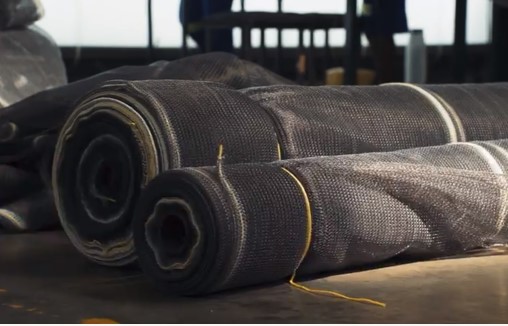Knittex is known for its high-quality ranges of shade netting. To ensure that every net meets the high-quality standards promised to the user, the nets go through rigorous testing throughout the manufacturing process. If you are curious to know more, you need to visit their NAMPO stand this Harvest Day!
The textile manufacturer has been producing nets since 1964. Today they are well-known for their wide variety of shade netting for agricultural, domestic, industrial, and civil and mining industries.
Under the category of agricultural netting, Knittex ensures these nets can be used for crop protection, encouraging growth and keeping temperatures consistent. Each type of net serves a different function and the test that the manufacturer conducts aids in ensuring that the net functions as promised.
Hail or shine, Knittex offers quality protection
With nets that are placed over orchards, for instance, one of the functions of the netting is to protect the crop against hail. From the beginning to the end of the manufacturing process, Knittex uses High-Density Polyethylene and ultraviolet inhibitors to produce the strongest filament to knit the textiles into the toughest net that won’t tear under extreme conditions. Under normal hail storms the net should be able to withstand the velocity of falling hail, as well as the weight of the hail that collects on the net after a hailstorm depending on the structure.
To test this quality, the Knittex-team designed a hail gun. This device shoots spherical ice projectiles. The gun is loaded manually from the front, almost like a canon. The chamber behind it is pressurised by use of a compressor. The pressure can be adjusted manually to control the velocity of the projectile.
Since the weight and speed against which the hail will hit the net due to its differing size, the hail gun needs to be able to also adjust the size of the hail. To accommodate this, the machine has a selection of barrel that is used interchangeably to test the various hailstones.
This year Knittex will be taking the hail gun to NAMPO! Visit stall H10b to see it in action.
But the textile manufacturer does so much more than just this one test to ensure the reliability of their products. To meet the stringent standards set forth by the governing bodies for shade netting, there are a number of tests conducted. Let’s take a look at the process as set out in this YouTube video:
Melt-flow test
This test is aimed at ensuring that the plastic that is used in the manufacturing process is up to standard. When melting the plastic at a specific temperature, the plastic needs to melt at a consistent rate and flow through the hole at a specified rate. The weight of the pieces that flowed through the opening is then weight to find the mean weight that melted in the set time.
Tear and burst tests
The tear and burst tests are two separate tests. Both these tests are conducted from each roll manufactured in their state of the art facility.
The tear test applies force to see how long it takes to tear a piece of net. The technician notes what amount of force it took to snap the filaments.
During the burst test, a rubber bladder is placed between two pieces of the net. In the burst chamber, the materials are locked in. Next, the bladder is filled with air. The material resists, but then it bursts. The technician notes the amount of force that caused the net to break.
Note that although the piece of net breaks in the centre, the tears do not run, meaning one hole will not grow larger and larger when used over your crops.
Both these tests are compared to the Knittex standards accumulated over the 59 years in production.
Shade test
The shade test is designed to measure the amount of light that is let through the net. This test is important because Knittex needs to be able to certify the percentage of shade that the nets have. Naturally, depending on the type of net being tested, the results will differ, but it needs to meet the criteria for that specific shade or decorative net.
For more information on Knittex’s quality products, visit their website at www.knittex.co.za.








